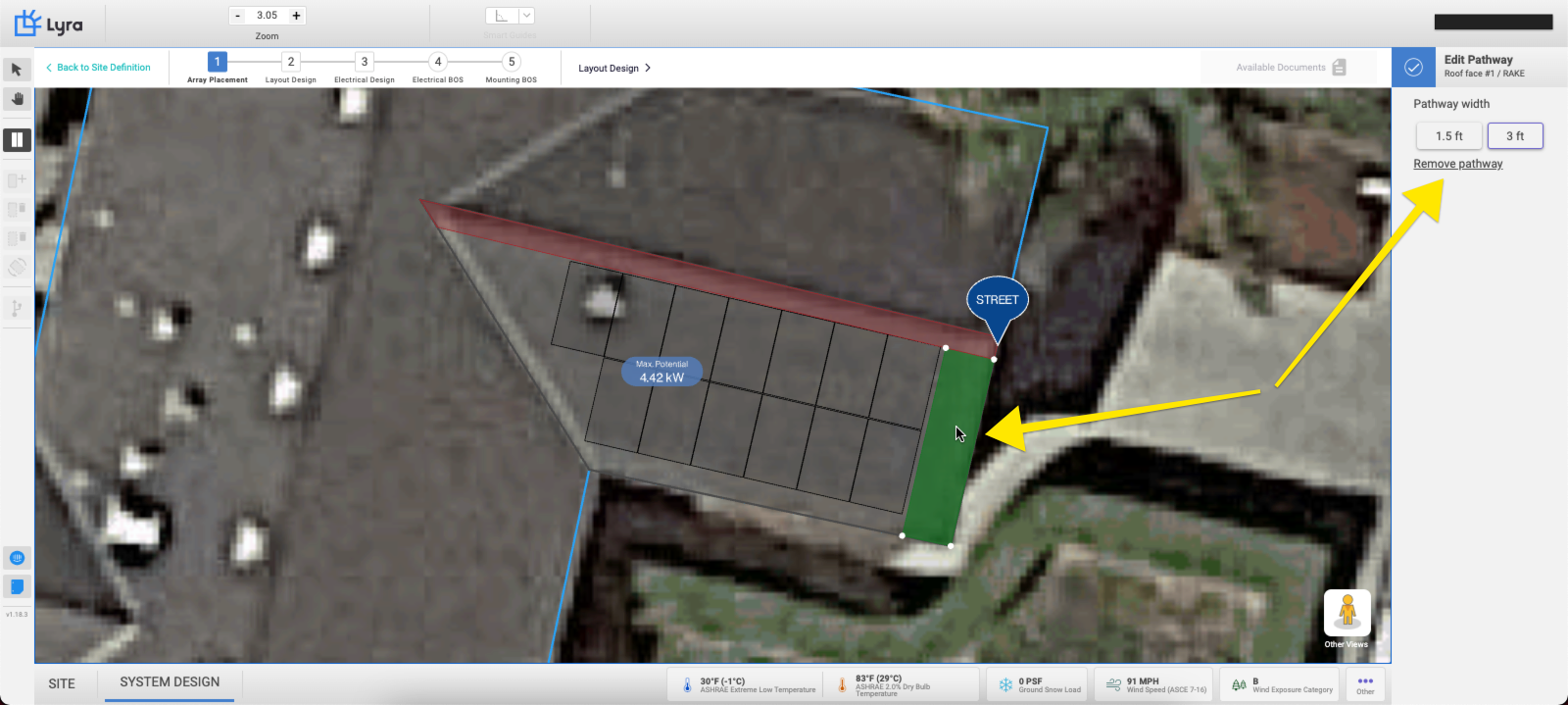How to edit, remove, and add setbacks on your design.
In this article we'll cover how you can edit, remove, and add setbacks to your design.
Setbacks and pathways that meet the requirements of the fire code selected are added to your project automatically during the Array Placement step once module positions are added to the roof. You can see the setbacks around your roof face in the photo below. Pathways in green are 3ft and setbacks in red are 1.5ft.
-1.png)
Editing Setbacks
Setbacks are generated automatically according to the fire code of your local area but if you'd like to edit your setbacks you can do so with the Setback Tool. This tool is located in the toolbar and is only available during the Array Placement step.
With the Setback Tool equipped, click on the setback or pathway you wish to edit. When a setback is selected it will have small white dots line the corners. Look to the right in the Properties Panel and you'll find three options: 3ft, 1.5ft, and "remove pathway." Simply click on your desired value. Lyra will then recalculate your layout.
Note: The width options displayed may be different depending on your locality.

Adding a setback when there is none works the same as when there is one except instead of clicking on a green or red box you'll select the traced line where your setback will be.
-1.png)
Unique Setback Requirements and Design Limitations
-
In areas that require unique setback and pathways widths we offer different options. For example, 1ft setbacks are acceptable by the Oregon Fire Code. Projects located within the state of Oregon are given 3ft and 1ft to accommodate this.
-
Setbacks and pathways cannot be placed on edges classified as step-flashing.
In areas that require unique setback and pathways widths we offer different options. For example, 1ft setbacks are acceptable by the Oregon Fire Code. Projects located within the state of Oregon are given 3ft and 1ft to accommodate this.
Setbacks and pathways cannot be placed on edges classified as step-flashing.
More in on Array Placement
If you'd like to read more about the Array Placement step, you can do so here.

